Archaeologia Lituana ISSN 1392-6748 eISSN 2538-8738
2020, vol. 21, pp. 117–131 DOI: https://doi.org/10.15388/ArchLit.2019.21.7
Life Across the River: Exploring the Impact of Urbanisation in 18th–19th Century Panevėžys
Rūta Brindzaitė
Department of Anatomy, Histology, and Anthropology,
Faculty of Medicine, Vilnius University
21 M. K. Čiurlionio Street, LT-03101 Vilnius, Lithuania
ruta.brindzaite@mf.vu.lt
Abstract. Studies aimed at considering the impact of industrialisation, urbanisation and modernisation on human health in 19th-century society are becoming increasingly relevant. Although it is exceptionally rare to encounter human skeletal material from the 19th century in present-day Lithuania, this study explores whether changes which occurred in that century had any impact on human health. This research presents the preliminary results of an anthropological analysis of the human remains discovered in Panevėžys Cemetery, with material spanning the 18th–19th centuries. In total, 90 individuals were examined, including 57 males, 15 females and 18 nonadult individuals. Fractures and nonspecific inflammatory lesions were the most prevalent pathological changes. However, the values of the average height of males and females did not reveal a significant change in stature. Overall, the results demonstrated inconsistent evidence of the effects of urbanisation on the skeletal population. It can be concluded that both the sample size and the observed pathologies represent only part of the community. Therefore, a more representative sample and additional analyses are required in the future, to provide comprehensive results and more solid conclusions.
Keywords: 19th century, human remains, bioarchaeology, palaeopathology, Lithuania, Panevėžys.
Gyvenimas kitoje upės pusėje: urbanizacijos pasekmės XVIII–XIX amžiaus Panevėžyje
Anotacija. Tyrimai, kuriuose nagrinėjamas XIX a. industrializacijos, urbanizacijos ir modernizacijos poveikis žmonių sveikatai, tampa vis aktualesni. Lietuvoje tokio pobūdžio antropologinė medžiaga aptinkama retai, todėl šiame straipsnyje pristatomi XVIII a. pabaigos–XIX a. Panevėžio kapinėse rastų palaidojimų pirminės antropologinės analizės rezultatai. Tyrimo imtį sudarė 90 individų: 57 vyrų, 15 moterų ir 18 vaikų. Gauti rezultatai parodė, kad šioje populiacijoje vyrauja kaulų lūžiai ir nespecifiniai, uždegimo sukelti pakitimai. Nustatyto vidutinio vyrų ir moterų ūgio rodikliai nesiskyrė nuo ūgio rodiklių vėlyvaisiais viduramžiais. Galima teigti, kad aiškių įrodymų dėl sveikatos būklės pokyčių, nulemtų urbanizacijos, nebuvo rasta, o bioarcheologinis populiacijos profilis tik iš dalies reprezentuoja XIX a. Panevėžio bendruomenę. Todėl, norint pateikti išsamesnius rezultatus ir išvadas, ateityje reikėtų surinkti reprezentatyvesnę imtį ir atlikti papildomus tyrimus.
Reikšminiai žodžiai: XIX amžius, žmonių palaikų tyrimai, bioarcheologija, paleopatologija, Lietuva, Panevėžys.
Received: 18/11/2020. Accepted: 23/12/2020
Copyright © 2020 Rūta Brindzaitė. Published by Vilnius University Press. This is an Open Access article distributed under the terms of the Creative Commons Attribution License, which permits unrestricted use, distribution, and reproduction in any medium, provided the original author and source are credited.
Introduction
Any examination of 18th–19th centuries in the countries of Western Europe is inconceivable without considering the Industrial Revolution and its socio-economic effects. Urbanisation, industrialisation and modernisation were fundamental processes shaping the daily lives of those living in Britain, France and Germany. It has been assumed that the rapid process of urbanisation (the movement of people from rural areas into urban settings and the increasing population size within those areas) had a detrimental effect on human health. Bioarchaeological studies of human skeletal populations can provide evidence of such health disorders (DeWitte and Betsinger, 2020; Western and Bekvalac, 2020). For example, an increased prevalence of rickets was found to be present in children from industrial Birmingham and London (Mays et al., 2006; Ives, 2018). Factors such as long working hours, crowded and narrow alleys in the city that limited the penetration of sunlight to the ground, and the typical items of clothing were among the conditions that led to an increase of vitamin D deficiency in these children. Moreover, air pollution as a consequence of industrial work has been attributed to upper and lower respiratory tract diseases, which can manifest as maxillary sinusitis and inflammatory periosteal reactions on the ribs (Roberts and Manchester, 1983; Lewis et al., 1995; Roberts, 2007). Lewis (2002) discovered that the children from industrial London were smaller than those from the urban areas of York, and concluded that industrialisation was the main factor attributing to this shift; however, Pinhasi et al. (2006) concluded that socio-economic status, rather than urbanisation or industrialisation, was the main cause of these observed differences in growth. The rising social inequalities in the industrial era made the most vulnerable members of society even more susceptible to health deterioration.
The ‘industrial wave’ that spread across Europe and the world was characterised by different timings and intensities in different countries. For centuries, Lithuania was a predominantly agrarian society: the majority of Lithuanian people lived in rural areas and only a small part resided in towns and cities. Hence, the urbanisation process in the country was relatively slow. When the Russian Empire (1721–1917) took over the lands of the Polish–Lithuanian Commonwealth in 1795, the country’s economy was based on the manual work of peasants with an animal workforce. Shortly, the local trade started to shift. Two uprisings (1831 and 1863), the abolishment of serfdom (1861) and the establishment of an international railway system influenced the inevitable changes in the country. Historical records and censuses confirm a rapid population growth and intensified development of the main cities in Lithuania: Vilnius, Kaunas, Šiauliai and Panevėžys (Miškinis, 1991; Bairašauskaitė et al., 2011). Panevėžys, which is located in North Lithuania, can be considered as an example of these processes (Figure 1). During archaeological excavations conducted in 2016 and 2018, parts of the city’s 18th–19th century cemetery were uncovered. Therefore, the aim of this study is to investigate if the process of urbanisation had any impact on the Panevėžys population, and if it did, what were the differences and how the new lifestyle affected their everyday lives.
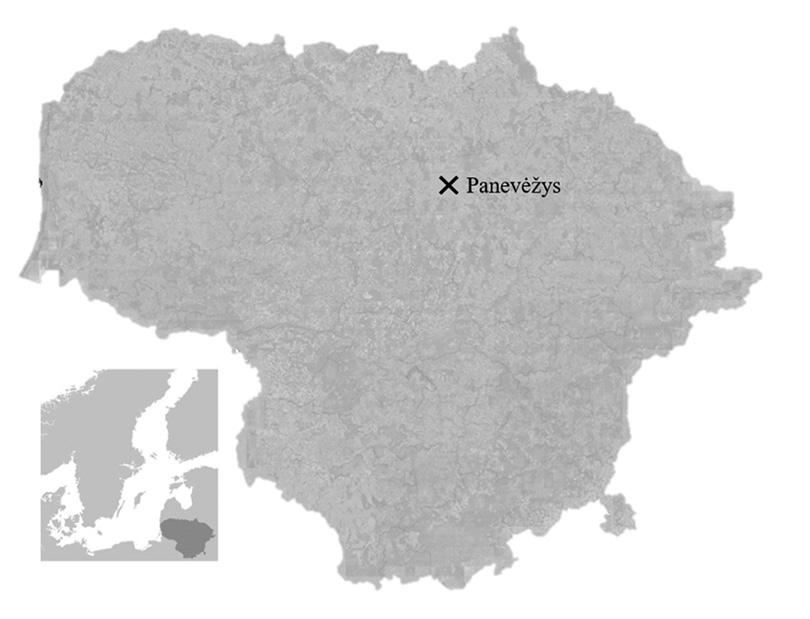
Fig. 1. Location map of Panevėžys.
1 pav. Panevėžio miestas dabartinėje Lietuvos teritorijoje
Historical Background
Many of today’s cities and towns were established in Lithuania at the beginning of the 16th century. The official date of the establishment of Panevėžys is considered to be 1503 when Alexander, the Grand Duke of Lithuania, gave the land of Ramygala to the region’s vicar. Panevėžys subsequently emerged from the manor, along the right and left riverbanks of the Nevėžis (Maksimaitienė, 1992; Miškinis, 1993; Ragauskienė, 2003). During the 16th–18th centuries, the settlement on the left riverbank – New Panevėžys – remained little more than a hamlet opposite the main settlement on the right riverbank – Old Panevėžys. However, New Panevėžys experienced rapid development and growth, surpassing the Old Panevėžys settlement by the 19th century (Ragauskiene, 2003).
In the 19th century, the lifestyles on the two riverbanks started to differ, as the people in New Panevėžys began to make a living in ways other than farming. In 1804, the centre of the town consisted of a market square and three main roads (Figure 2). At that time, the urbanscape had already been supplemented with the town’s future symbol – the mill house (Miškinis, 1993). Before the establishment of industrial mills, the majority of grain was milled in the small windmills of many households. In the 17th–18th centuries, the first mill to be powered by water was established near the River Nevėžis (Kaziukionis, 1993). Nonetheless, the typical industrial mills that included a steam roller, a warehouse and were capable of selling five million poods1 of flour and bran a year, only emerged during the second half of the 19th century (Maksimaitienė, 2003; Kaziukonis, 1993). According to Masilionis (1963, p. 332–333), around 50 workers were employed in every commercial mill house.
In 1873, the Radviliškis–Daugavpils railway branch was opened and Panevėžys was incorporated into the international Liepāja (Latvia) – Romny (Ukraine) railway system, which transported grain and flour from the Russian Empire to the rest of Europe (Lukoševičius, 2012). This development resulted in successful local and international trade opportunities for the town. Soon, the production of flour at the Panevėžys mills was well-known in Rīga, St. Petersburg, Liepāja, Warsaw, Moscow and England (Masilionis, 1963; Kaziukonis, 1993; Miškinis, 1993), and at the beginning of the 20th century the city became the largest grain milling centre in Lithuania (Kaziukonis, 1993, p. 54). However, the economy was not only shaped by the flour industry, as other commercial companies were operating in the city by the middle of the 19th century. These included a candle factory (1863), leather processing factory (1864), button manufacturer (1887) and a soap factory (1892), as well as two tobacco factories, a brewery and a distillery (1880) that successfully operated in the town (Astramskas, 2003, p. 162–181). It should be noted that the aforementioned companies should be considered as low-scale commerce units, as they all relied on manual work, simple technologies and local marketing.
Until the 19th century, the population of Panevėžys had continued to grow slowly, reaching about 800 inhabitants (Masilionis, 1963; Astramskas, 2003). However, from the beginning of this century, the multicultural population of Panevėžys, which was made up of Jews, Lithuanians, Russians, Poles, Germans and Karaites, started to increase significantly every decade. As a result, by the end of the 19th century, New Panevėžys had a population of 12,000 inhabitants (Astramskas, 2003, p. 115–120). This rapid accumulation of people in a defined territory, with daily interactions among the inhabitants and poor sanitation, led to the spread of infectious diseases. In Panevėžys, communal diseases like cholera occurred five times in 1848, 1853, 1866, 1871 and 1872; whereas syphilis spread in 1849, and typhus infected the population in 1868 (Astramskas, 2003, p. 122). The first outbreak of cholera was recorded in 1831, when soldiers of the Russian Empire were deployed in Vilnius. Following this, recurrent cholera outbreaks devastated the city residents, killing up to 39% of the population (Bairašauskaitė et al., 2011). When cholera, dysentery, and typhus fever hit Panevėžys in 1868, the hospital was overrun with patients as around 1900 people became ill at that time (Astramskas, 2003; Bairašauskaitė et al., 2011). A small, temporary hospital was opened in Panevėžys in 1843, whereas the main health care centre of the town was established in 1858. It is known that free medical services were available only for clergymen and the poor, while the remainder of the population were required to pay for treatment. For this reason, many people relied on barbers, pharmacists, herbalists or folk medicine for medical care. The treatment of infectious diseases was limited; for example, doctors used to prescribe a calomel (a mercury chloride mineral) to cure cholera (Siudikas, 1998; Frank, 2001), while the herbalists recommended consuming juniper tea and berries as a cure for cholera and typhus (Trimakas, 2001).
Although trade enabled the residents of the city to have access to a variety of foods, the daily diet was not well-balanced for the average inhabitant of Panevėžys, consisting of excessive amounts of carbohydrates and being highly deficient in protein and fibre. Porridge, soups, bread and potatoes were the products which were consumed every day, while meat and fish were eaten rarely. For example, in 1855, 175 pigs, 160 sheep and 400 calves were slaughtered, meaning that, on average, 30 inhabitants shared one pig and one lamb per year, and 13 inhabitants had only a single calf to consume within one year. This proves that the town’s population obtained the essential daily calories from sources such as grains and their products. On average, one inhabitant purchased around 234 litres of flour every year. Little is known about the consumption of foreign goods in the town, but sugar, tea and coffee were available on rare occasions for the majority of people in Panevėžys during the 19th century (Astramskas, 2003, p. 143).
Panevėžys experienced various changes during the 19th century. Primarily, a rural lifestyle was overtaken by urban activities. Mills, commerce and international trade were the first hallmarks of this transformation. Within a century, Panevėžys became the industrial and financial centre in the North-East region of Lithuania.
Material and methods
The material for this study came from a former church graveyard situated in New Panevėžys. In 1803, the Holy Trinity Church was erected by the Piarists, also known as the Scolopi, Escolapios or Poor Clerks of the Mother of God, who settled in Panevėžys in 1727. In addition, a gymnasium was opened inside the premises of the monastery and the monks were involved in teaching activities (Klimka and Kivilšienė, 2008). The surrounding area became a burial ground for members of the parish community (Figure 2). However, this Catholic church was closed down and became an Orthodox church in 1847. Nevertheless, it is known that the remaining Catholics were allowed to bury their members in the Orthodox cemetery. By 1890, the entire territory was taken over by the Orthodox community and the cemetery was enclosed (Maisilionis, 1963, p. 131; Lebednykienė, 2003, p. 52–53).
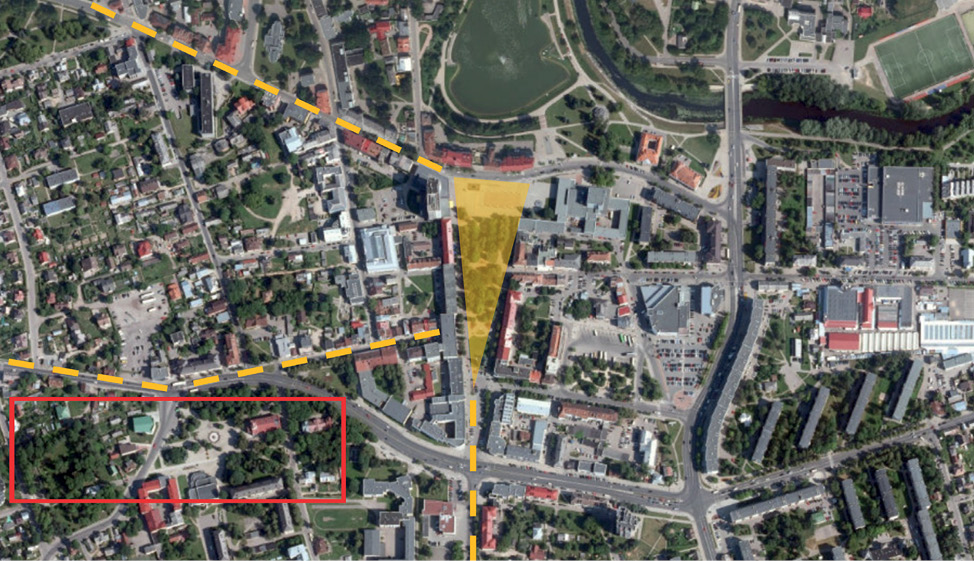
Fig. 2. New Panevėžys in the beginning of the 19th century. Based on Miškinis (1993, p. 24–25). The yellow triangle shows the market square with three main streets in Panevėžys. The red rectangle marks the area that belonged to the Piarists (including the church, monastery and cemetery).
2 pav. Naujojo Panevėžio schema XIX a. pradžioje, remiantis Miškiniu (1993, p. 24–25). Geltonas trikampis žymi turgaus aikštę ir tris pagrindines Panevėžio gatves. Raudonas stačiakampis žymi pijorams atitekusią teritoriją (įtraukiant bažnyčią, vienuolyną ir kapines)
An archaeological excavation of the church graveyard took place in the SE and NE parts of Panevėžys Old Orthodox Cemetery in 2016 and again in 2018 (Petrulis, 2016; 2018). In total, 95 skeletons were uncovered in single or group burials, with a minimum of 20 individuals estimated to be present among the commingled remains. The dead were buried in coffins that were oriented to the west. In some of the burials Orthodox grave goods were found, including crosses, a medallion and a brooch (Petrulis, 2016). It was subsequently concluded that these burials should be dated from the end of the 18th century to the late 19th century (Petrulis, 2016; 2018).
An anthropological examination was carried out in the osteological laboratory of the Faculty of Medicine at Vilnius University by Rūta Brindzaitė and Justina Kozakaitė. The high level of preservation and the minimal fragmentation of the skeletons allowed for a further anthropological analysis. The sex determination was conducted according to the conventional methods, based on pelvis and skull dimorphic traits (Buikstra and Ubelaker, 1994), and only for mature individuals (over 20 years old). The age estimation was based on changes in the pubic symphysis, as indicated by the Suchey and Brooks method, as well as by the auricular surface changes following the Lovejoy and Meindl method (White and Folkens, 2005). The mature individuals were grouped into young (18–34 years), middle-aged (35–49 years), and older (over 50 years) adults. The ages of the nonadult individuals were estimated by the dental development and eruption (Buikstra and Ubelaker, 1994), and in the cases with no tooth preservation, the skeletal maturation was evaluated (Scheuer and Black, 2000). Based on the dental and skeletal development, five age groups (birth-1 year; 1–4 years; 5–9 years; 10–14 years; and 15–18 years) were established for the immature individuals. A palaeopathological analysis was also carried out following Aufderheide and Rodríguez-Martín (1998), Ortner (2003), and Waldron (2009). Maximal femoral length measurements were taken, and the Trotter and Gleser regression formula was applied for the stature reconstruction (Trotter and Gleser, 1952).
Results
Sex and age at death
In total, 95 individuals were analysed. The sex and age of five individuals (5% of the total sample) were undetermined due to the incomplete remains; therefore, these individuals were omitted from the further analysis. Figure 3 shows the age-at-death and sex distribution of the final sample size of 90 individuals. The sample consisted of 57 males, 15 females and 18 nonadult individuals (63%, 17% and 20%, respectively). The peak age at death for the adult sample varied from young (18–34 years) to middle-aged (35–49 years) adulthood, making up 36% (n=32) and 39% (n=35) of the total sample, respectively. The majority of the nonadult individuals belonged to the 1–4 year group (n=7 or 8% of the total sample) and the 15–18 year age group (n= 5 or 6% of the total sample).
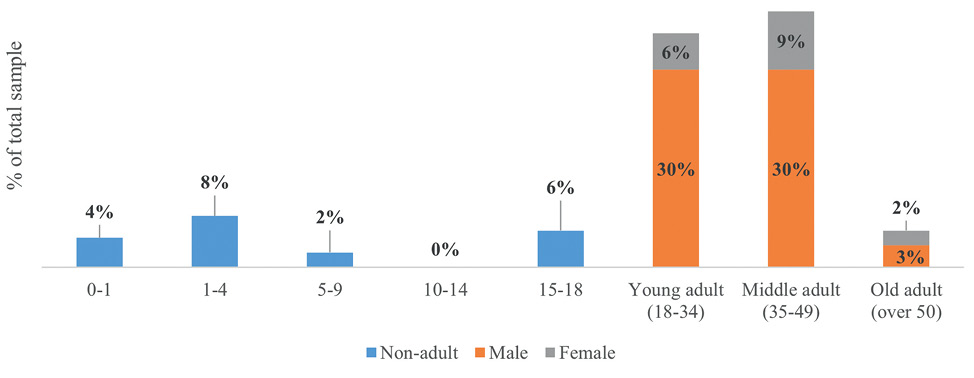
Fig. 3. Sex and a>ge-at-death distribution in Panevėžys sample.
3 pav. Panevėžio imties pasiskirstymas pagal lytį ir amžių
Pathological conditions
In total, three quarters (n=72) of all the individuals had pathological bone changes. A summary of the overall pathological conditions and the crude prevalence rates in the Panevėžys sample is presented in Figure 4.
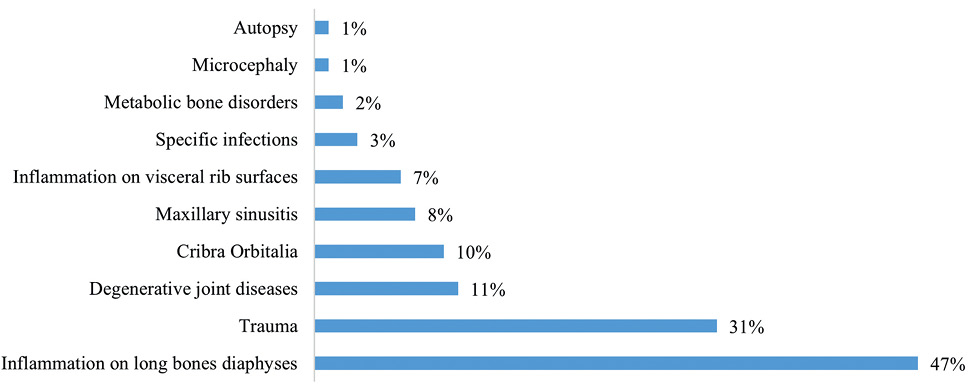
Fig. 4. Pathological conditions and crude prevalence rates in the sample.
4 pav. Registruotos patologijos ir jų paplitimas
Cribra orbitalia. The prevalence of cribra orbitalia was low and no distinct pattern was found for its occurrence. A change in the orbital roofs was recorded only in 10% of all the preserved orbital roofs (9/66). Peaks in the age distribution revealed that cribra orbitalia mostly occurred in nonadults belonging to the 1–4 year age group (3 individuals), as well as in the young and older adults (2 individuals in each age group).
Nonspecific inflammation of the long bone. A nonspecific inflammatory bone response of the periosteum and cortex were the most prevalent pathological changes in the sample group (42/90), where 50% (36/72) of the adults exhibited nonspecific woven, lamellar or a combination of both types of deposits on the long bone diaphysis. The most commonly affected bones were the lower limb bones – the femora and tibiae. The tibia demonstrated the highest prevalence of inflammatory changes, occurring in up to 41% (22/68) of the overall sample group. Only four of the individuals had woven bone deposits at the time of their death, and four of the nonadults had a pathological new bone formation that could not be definitely attributed to bone remodelling due to normal growth.
Maxillary sinusitis. Irregular pitting and new bone formation on the inferior surface of the maxillary sinuses was recorded when the sinuses were available for observation. At least seven individuals (8%) were affected by the infection in the maxillary sinus (Figure 5).
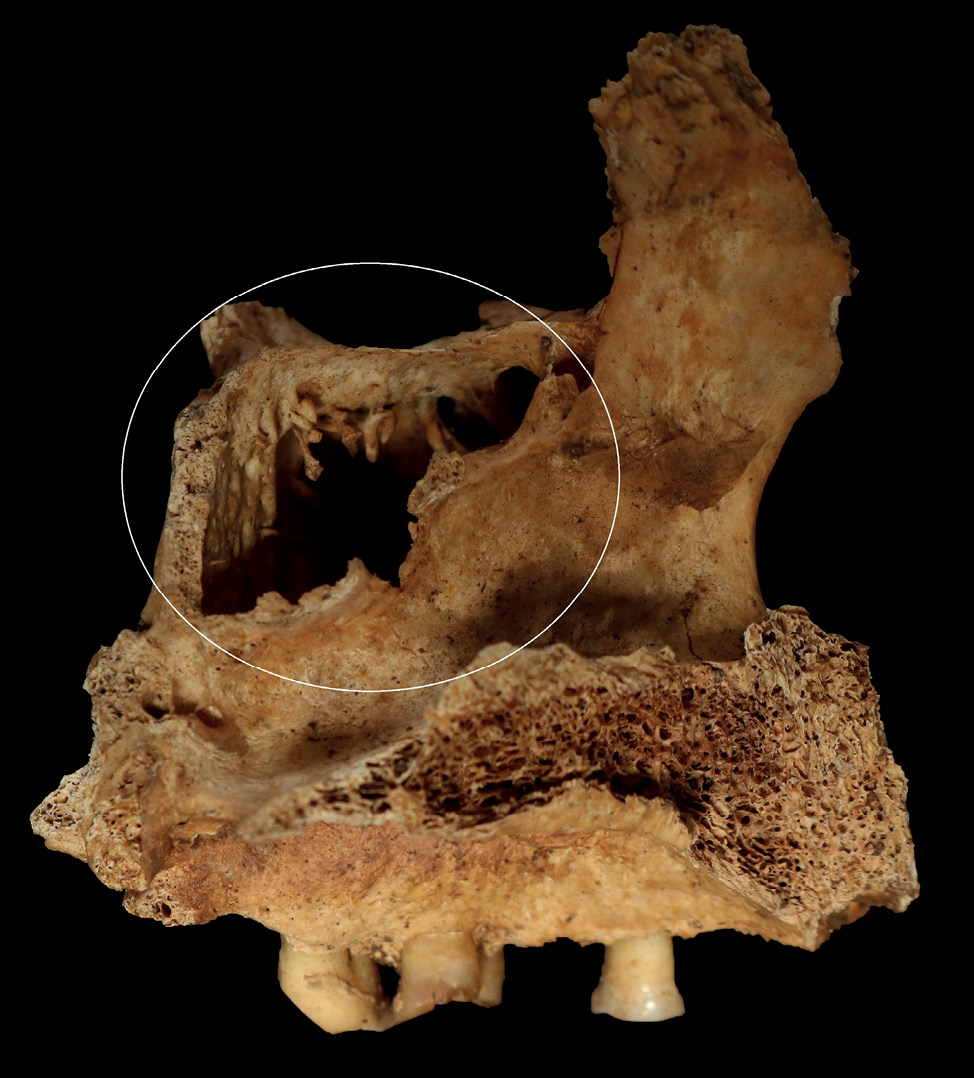
Fig. 5. Bone spicules indicative of ossification of the mucosa in maxillary sinusitis of a 35–45-year old male from grave no.1. Photo courtesy of R. Brindzaitė.
5 pav. Kaulinės išaugos viršutinio žandikaulio sinuse. Vyras, 35–45 metų, palaidotas kape Nr. 1. R. Brindzaitės nuotrauka
Inflammation on the visceral surface of the ribs. The cases in which individuals demonstrated an inflammatory reaction on the visceral surface of the rib and a fracture, were excluded, as they displayed signs of healing that were related to a traumatic event. In total, lesions on the visceral surfaces of the ribs were found in six individuals (7%). Woven bone formations covered vast areas of the ribs, and were more frequently observed on the left side elements than on the right side ones, with at least four ribs affected in each case (Figure 6). One individual had active inflammatory lesions on the visceral rib surfaces and maxillary sinusitis, and this co-occurrence might suggest the presence of a respiratory disease at the time of death.
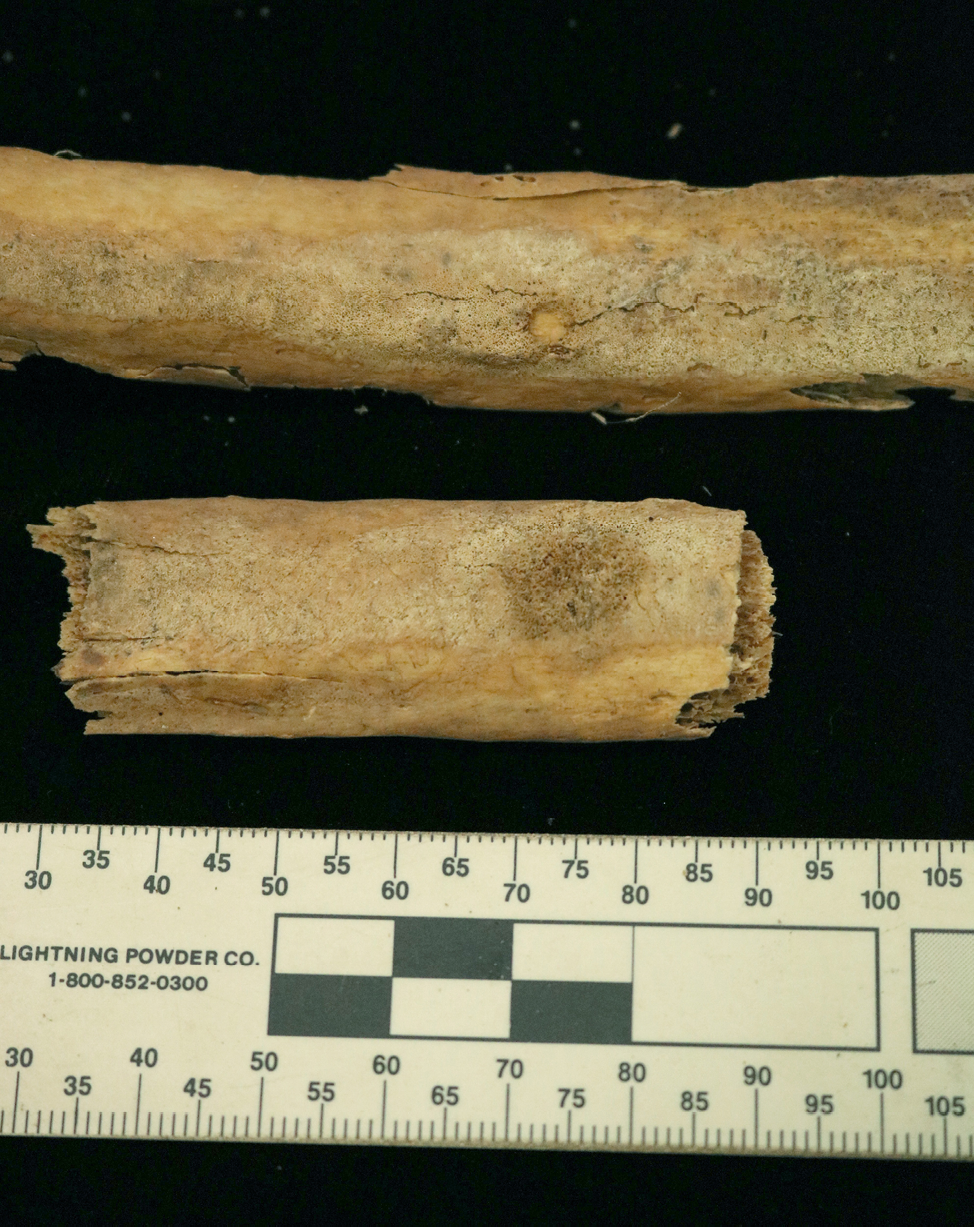
Fig. 6. Inflammation lesions on the visceral surface of some ribs. Photo courtesy of R. Brindzaitė.
6 pav. Uždegimo sukelti pakitimai šonkaulių vidiniuose paviršiuose. R. Brindzaitės nuotrauka
Trauma. In total, 31% (n=28) of all the individuals showed evidence of traumatic episodes in their lifetime. In this sample, these traumatic events manifest themselves as bone fractures. A quarter of all the individuals (7/28) had more than one bone fracture, indicating repetitive traumatic events. The majority (93% or n=69) of the fractures were healed, whilst only three fractures were still healing at the time of death. According to the fracture type and location, some of the cases could be subdivided into possible causes of injury. These causes were thought to include acts of interpersonal violence, accidental events and fatigue fractures caused by a repetitive force.
The male individuals experienced more traumatic events than the females (Table 1). In addition, the prevalence of fractures increased with age (Table 2). Violent conflicts could be related to the nasal, parietal and zygomatic bone fractures recorded in five of the male individuals and one female. The results also demonstrated that the prevalence of rib fractures was the highest; out of the 52 adult individuals with well-preserved ribs, 25% or 13 individuals (one female and twelve males) were found to have experienced one or more rib fractures. Fractured tibiae, fibulae and radii could be more related to accidental events, such as a fall, in nine individuals. Stress fractures, or typical ‘marching’ fractures, were recorded in three of the male individuals. However, some of the healed fractures showed evidence of complications such as adjacent subperiosteal bone formation on the diaphysis of the fibulae and tibiae, post-traumatic arthritis in the radii, and pseudoarthritis or deformation of some of the ribs.
Table 1. Distribution of fractures between male and female individuals.
1 lentelė. Lūžių pasiskirstymas tarp vyrų ir moterų
|
Male |
Female |
|||
|
Bone |
Percentage |
N (fractured/observed) |
Percentage |
N (fractured/observed) |
|
Parietal bone |
2% |
(1/44) |
9% |
(1/11) |
|
Zygomatic bone |
2% |
(1/44) |
0% |
(0/9) |
|
Nasal bones |
8% |
(3/38) |
0% |
(0/9) |
|
Vertebrae |
2% |
(1/47) |
0% |
(0/12) |
|
Ribs |
29% |
(12/42) |
10% |
(1/10) |
|
Clavicle |
2% |
(1/48) |
0% |
(0/14) |
|
Radius |
4% |
(2/49) |
0% |
(0/13) |
|
Metacarpals |
6% |
(3/50) |
0% |
(0/12) |
|
Tibia |
4% |
(2/45) |
8% |
(1/12) |
|
Fibula |
9% |
(4/45) |
0% |
(0/12) |
|
Metatarsals |
6% |
(3/50) |
0% |
(0/12) |
Table 2. Age groups, sex, and distribution of fractures.
2 lentelė. Lūžių pasiskirstymas pagal individų amžių ir lytį
|
Young adult |
Middle adult |
Old adult |
|
|
Male |
33% (9/27) |
48% (13/27) |
67% (2/3) |
|
Female |
40% (2/5) |
0% |
50% (1/2) |
Specific infectious diseases. Two cases of tuberculosis were found in the males aged 25–34 and 40–44 years. These destructive lesions were found on the axial skeleton – the sacrum and lumbar vertebrae. Also, one female belonging to the 30-39 year group demonstrated lesions that may be attributed to a possible case of treponemal disease. A combination of bone destruction and new bone formation in the same lesion was found on the diaphysis of the humerus and femora, although caries sicca was not found (Figure 7).
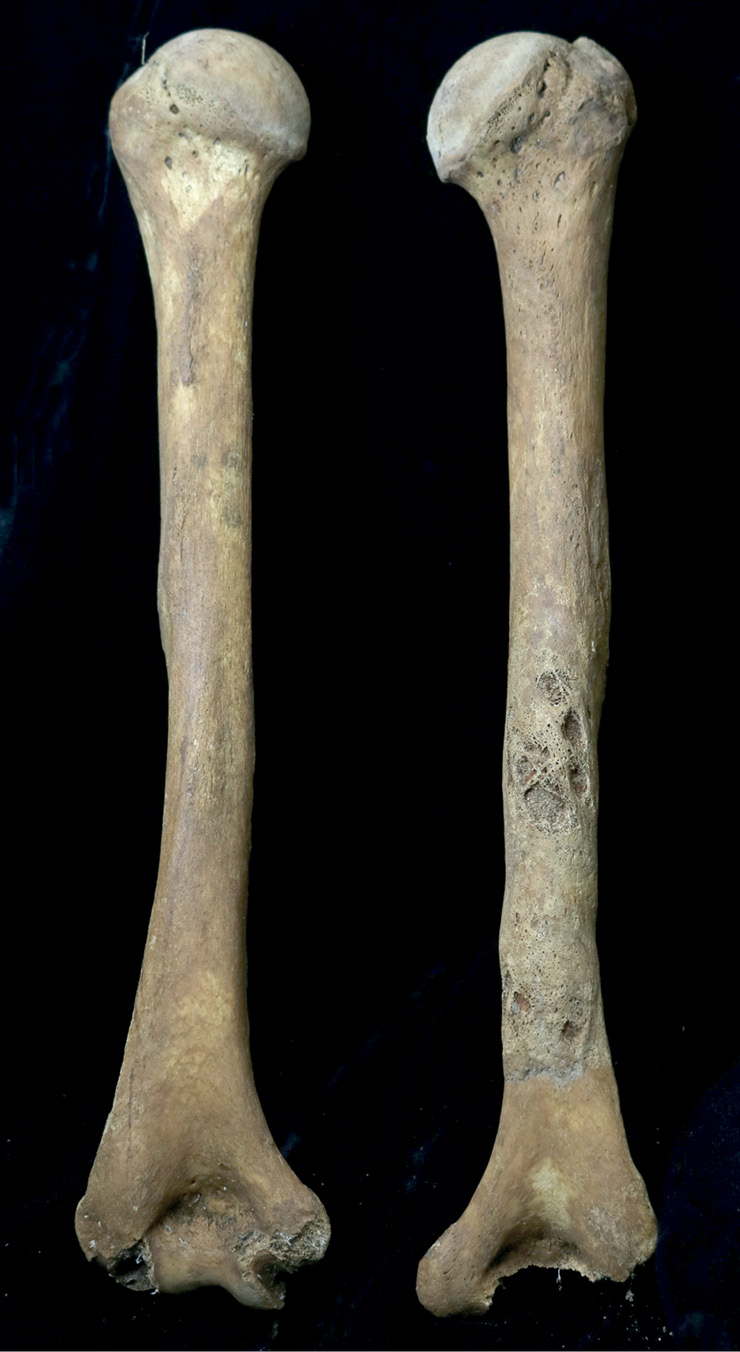
Fig. 7. Bone destruction and new bone formation on the posterior surface of the right humerus. Female, 30–39 years old, Burial No. 31. Photo courtesy of R. Brindzaitė.
7 pav. Kaulo ardymas ir naujo kaulo formavimasis dešinės pusės žastikaulio užpakaliniame paviršiuje. R. Brindzaitės nuotrauka
Stature
The femora of seven female individuals and 43 male individuals were used for the stature reconstruction (Figure 8). The difference between the sexes was 10 cm. The average value of the female height was 158.4 cm, and the difference between height of the tallest and the shortest female in the sample was 9 cm. The estimated average male stature was 168.5 cm, with around a 26 cm difference between the tallest and the shortest male. In the case of Burial No. 37, a young male skeleton determined to be 18–20 years of age demonstrated an exceptionally high value for his stature, which reached 186.1 cm and was almost 18 cm above the sample average.
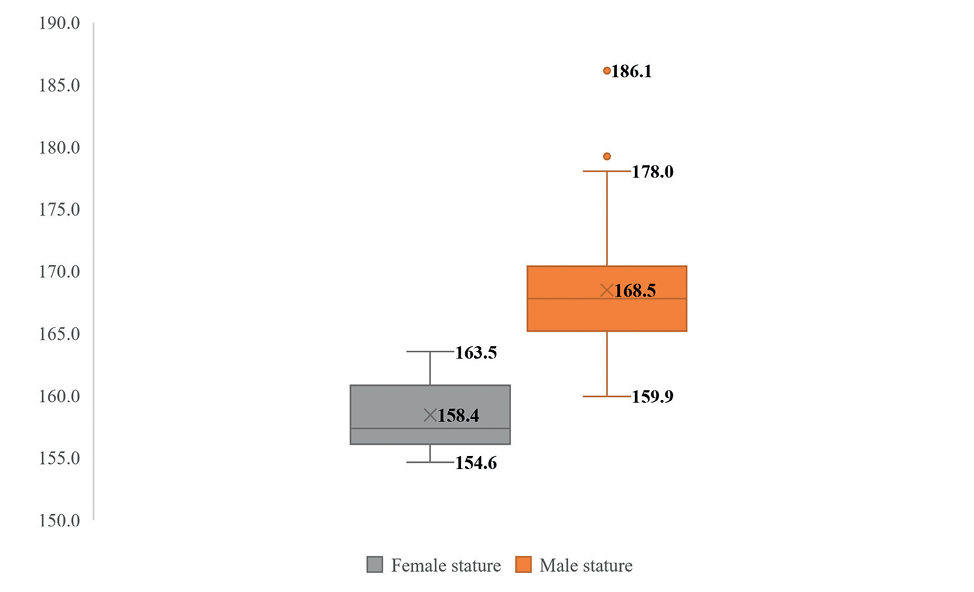
Fig. 8. Average height between both sexes (cm).
8 pav. Vidutiniai vyrų ir moterų ūgio rodikliai (cm)
Discussion
Adverse living conditions were fairly common in the rapidly urbanised areas prevalent from the 18th until the early 20th century. Substantial population growth within these urban settings led to instability and inequalities. This resulted in crowding, malnutrition, unsanitary living conditions and the spread of diseases such as tuberculosis, typhus, cholera and syphilis. Many people were exposed to a higher risk of dying, as well as to respiratory, gastro-intestinal and metabolic diseases (Sharpe, 2012; Jaadla et al., 2017). Moreover, the working and living environments did not have any official regulations, frequently making them hazardous spaces. Although the skeletal material for this period in Lithuania is scarce, some modest inferences can be drawn based on the results of the current study, considering the lifestyles and the possible new health hazards occurring in the 19th century.
According to Jatautis and Mitokaitė (2013), the dead who were buried in the cemetery on the right riverbank, in Old Panevėžys, represented a community with a predominantly rural lifestyle. In their anthropological analysis of a 16th–17th century skeletal sample from the Panevėžys burial ground, they concluded that the bioarchaeological profile and average height in the sample resembled that of a rural community. Therefore, the skeletal assemblage analysed in the current study can be compared to that from the rural site. Traumatic events were rare in the Old Panevėžys sample, representing 13.5% (n=30) of the fractures (Jatautis and Mitokaitė, 2013). The higher prevalence of fractures, affecting 31% (n=28) of the individuals found in the current sample demonstrates that the risk of traumatic episodes significantly increased during the 18th–19th century in Panevėžys. No humeral or femoral fractures were recorded in the sample, although, as seen in many other archaeological sites, broken ribs were more prevalent (25%) than any other type of fracture (Lovell, 1997; Aufderheide and Rodríguez-Martín, 1998; Roberts and Cox, 2003; Brickley, 2006; Kozakaitė and Jakulis, 2017; Kozakaitė, 2018). Even though the reconstruction of an underlying traumatic event is often a challenging task, rib fractures occur no less frequently today than they did in the past (Galloway, 1999; Liebsch et al., 2019). Matos (2009) indicated the great variability in the crude prevalence rates of rib fractures in bioarchaeological studies, which ranges from 5.2% to 31.3%. The main cause of a fractured rib is a blunt trauma to the chest, leading to pain, as well as restrictions on deep breathing or even coughing. Although nowadays such an injury can typically happen during a motor vehicle accident, fall or a work-related accident, Lovell (1997, p. 166) indicates that in the past, fractures of the nasal, zygomatic bones, mandible, vertebral spinous process, hand and/or foot bones and the ribs were frequently a result of acts of interpersonal physical violence (for example, punching, kicking, shoving, etc.). However, ribs can also break as a secondary effect of metabolic bone disorders, such as osteomalacia and osteoporosis (Brickley, 2006). According to a comprehensive trauma analysis by Kozakaitė, rib fractures were a highly prevalent form of trauma in an urban environment, namely in Vilnius, during the 13th–18th centuries, while individuals from rural environments exhibited a higher prevalence of trauma to hands, spine and ankles (2018, p. 144). Rib fractures were also found to be quite common among the Basilian monks of the 17th–18th centuries (Kozakaitė and Jakulis, 2017). In this study, the prevalence of rib fractures was higher than that recorded in rural Old Panevėžys during the 16th–17th centuries (Jatautis and Mitokaitė, 2013), suggesting that a more harmful environment accompanied the urban lifestyle of the 19th century.
In other studies of post-medieval2 communities, urban samples dated to the 18th–19th centuries showed an increase number of traumas that were induced by physical abuse and work-related activities. For example, 27% (n=28) of the diamond miners from Kimberly (South Africa) presented well-healed, healing and perimortem fractures, most of which could be attributed to interpersonal violence (cranial fractures), strenuous activity (cranial and long bone fractures, subluxations and spondylolysis), as well as medical treatment (amputations) (Van der Merwe et al., 2010). A higher prevalence of fractures was found in a 18th–19th century skeletal sample that occurred in the skeletal assemblage from an earlier period in Oxford; in this case, head and facial injuries were the most prevalent, indicating an increased number of conflict events among those individuals (Webb et al., 2009). In late modern London, the most prevalent types of fractures involved the ribs, lower arms and the hands, suggesting the risk of occupational hazards; whereas the least affected bones were the humerus and the femur, indicating that high impact accidents were uncommon in the Industrial Era (Western and Bekvalac, 2020). Therefore, the results of this study can be considered to reflect the dangers that people had to encounter in urban Panevėžys during the 19th century.
Since nonspecific stress indicators have a diverse aetiology, high prevalence rates of these indicators were expected in this study. These pathological bone changes can be associated with several causes, including minor trauma, infections, pollution, parasitism, malnutrition etc. These markers should not be unexpected in 19th century Lithuania, because living conditions only started to improve at the end of the century (due to an increased number of medical staff and hospitals, the introduction of vaccinations for children, better sanitation, etc.). Therefore, the adult height of Lithuanians increased only in the first half of the 20th century, when males became 8 cm taller and females grew 6 cm taller. The latest study on the secular trend of adult height confirms that this trend existed in many of the countries of Central and Eastern Europe (NCD Risk Factor Collaboration, 2016).
As is often the case, the main limitations of this study must be addressed. The sample had a strong age bias, and the sex ratio was unequal – 0.23 (15 females and 57 males). This disproportion suggests that the sample might represent the early times of the cemetery, when it belonged to the Piarists. If so, the sample may be comprised not only of parish members, but also of monks. From the early 18th century until the closure of the monastery in 1831, the Piarists were an influential community in Panevėžys, where they maintained a gymnasium, library, monastery, church, chapel, cemetery and a garden. This required many monks to be involved in the daily activities of the community. Unfortunately, there are no cemetery plans or historical records that can provide more details about life in the monastery, so the question concerning who was buried in the cemetery, and in which area, still remains. If the presence of monks is not indicated in the skeletal sample, then the sex ratio should be considered as accidental, because the historical records do not indicate a high rate of male mortality in Panevėžys during the 19th century. Also, the small number of immature individuals might suggest the practice of different funeral rites, a different form of mortality or a poor retrieval rate from the site. Of course, the lack of females and of nonadult individuals might have been caused by the excavation policy, as only a fragment of the whole cemetery was uncovered. In any case, the disproportionate distribution of males, females and nonadults in the sample is a major drawback in this study, and the results should therefore be evaluated carefully. Future research will be necessary for this sample, especially if the available materials increase in number. An additional analysis of the dental status and stable isotopes would also be beneficial to gain a comprehensive view of this 19th century community in Lithuania.
Conclusions
The New Panevėžys sample provides valuable material for the investigation of an early industrial population in Lithuania. Currently, this is the only sample that represents such a community from the 18th–19th century available in the Human Osteological Collection of Vilnius University. However, a comprehensive analysis was restricted due to a sex and age bias. There was a clear underrepresentation of nonadults and female individuals, and this confined the potential usefulness of the sample.
The stature reconstruction did not reveal any increase in height among the urban population; therefore, it is safe to say that in Lithuania there was no significant change in the average stature from the 13th until the 20th century. Meanwhile, the prevalence of fractures was much higher than it was seen in a previous study of the rural 16th–17th century population in Panevėžys. So far, trauma provides the only strong evidence of the hazards of living in an urban environment. Other pathologies, such as nonspecific rib lesions and maxillary sinusitis, might also suggest the new perils that possibly occurred under the rapid urbanisation of Panevėžys. Additional methods and analyses (for example, a dental analysis and isotope analysis) are needed to provide a more complete picture of this population in the future.
References
Astramskas A. 2003. Po dvigalvio erelio ženklu (XIX a. – XX a. pradžia). K. Gudas (ed.) Panevėžys nuo XVI a. iki 1990 m. Panevėžys: Nevėžio spaustuvė, p. 115–286.
Aufderheide A. C., Rodríguez-Martín C. 1998. The Cambridge Encyclopedia of Human Paleopathology. Cambridge University Press.
Bairašauskaitė T., Medišauskienė Z., Miknys R. 2011. Lietuvos istorija, t. VIII, I dalis: Devynioliktas amžius: Visuomenė ir valdžia. Vilnius: Baltos lankos.
Boyd D. A. 2020. Respiratory Stress at the Periphery of Industrial-Era London: Insight from Parishes Within and Outside the City. S. N. DeWitte, T. K. Betsinger (eds.) The Bioarchaeology of Urbanization. Springer, Cham, p. 379–402.
Brickley M. 2006. Rib Fractures in the Archaeological Record: A Useful Source of Sociocultural Information? International Journal of Osteoarchaeology, 16 (1), p. 61–75.
Brimblecombe P. 1978. Air Pollution in Industrializing England. Journal of the Air Pollution Control Association, 28 (2), p. 115–118.
Brindzaitė R. 2016. Vilniečių vyrų ūgis XVI–XVII a. Bakalauro darbas. Vilniaus universitetas.
Buikstra J. E., Ubelaker D. H. 1994. Standards for Data Collection from Human Skeletal Remains. Fayetteville: Arkansas Archeological Survey Research Series No. 44.
Davies-Barrett A. M., Antoine D., Roberts C. A. 2019. Inflammatory Periosteal Reaction on Ribs Associated with Lower Respiratory Tract Disease: A Method for Recording Prevalence from Sites with Differing Preservation. American Journal of Physical Anthropology, 168 (3), p. 530–542.
DeWitte S. N., Betsinger T. K. 2020. The Bioarchaeology of Urbanization. Springer, Cham.
Frank J. 2001. Atsiminimai apie Vilnių. Vilnius: Mintis.
Galloway A. 1999. Principles for Interpretation of Blunt Force Trauma. V. L. Wedel, A. Galloway (eds.) Broken Bones: Anthropological Aanalysis of Blunt Force Trauma. Springfield, IL: Charles C Thomas, p. 35–62.
Ives, R. 2018. Rare Paleopathological Insights into Vitamin D Deficiency Rickets, Co-occurring Illnesses, and Documented Cause of Death in Mid-19th Century London, UK. International Journal of Palaeopathology, 23, p. 76–87.
Jaadla H., Puur A., Rahu K. 2017. Socioeconomic and Cultural Differentials in Mortality in a Late 19th Century Urban Setting: A Linked Records Study from Tartu, Estonia, 1897–1900. Demographic Research, 36, p. 1–40.
Jankauskas R. 1995. Vėlyvųjų viduramžių Alytaus antropoekologija (XIV–XVII a. senkapio duomenimis). Lietuvos archeologija, 11, p. 34–46.
Jatautis Š., Mitokaitė I., Jankauskas R. 2010. Traumas of Vilnius Adult Males and Females in the 16th–17th Centuries: Implications on Gender and Life Style. Papers on Anthropology, 19, p. 110–129.
Jatautis Š., Mitokaitė, I. 2013. Senojo Panevėžio gyventojai XVI–XVII a.: bioarcheologinė analizė. Lietuvos archeologija, 39, p. 97–120.
Kaziukonis L. 1993. Iš Panevėžio malūnų praeities. Panevėžio miesto istorijos fragmentai. Panevėžio kraštotyros muziejus. Panevėžys, p. 54–59.
Klimka A., Kivilšienė R. 2008. Panevėžio Pijorų mokykla XIX a. pirmoje pusėje. A. Astramskas (ed.) Iš Panevėžio praeities: švietimo istorijos puslapiai. Panevėžys. p. 8–18.
Kozakaitė J. 2018. Traumos XIII–XVIII a. Lietuvoje bioarcheologiniais duomenimis. Daktaro disertacija. Vilniaus universitetas.
Kozakaitė J., Jakulis M. 2017. Lūžę šonkauliai, praskeltos galvos: Vilniaus Švč. Trejybės cerkvėje palaidotų vienuolių sužalojimai. Lietuvos istorijos studijos, 39, p. 24–39.
Kozakaitė J., Miliauskienė Ž., Brindzaitė R. 2019. Hidden, Unwanted or Simply Forgotten? A Bioarchaeological Profile of the Subačius Street 41 Population. Archaeologia Lituana, 20, p. 116–138.
Lebednykienė J. 2003. Panevėžys: senovė ir dabartis. Vilnius: Vaga
Lewis M. E. 2002. Impact of Industrialization: Comparative Study of Child Health in Four Sites from Medieval and Postmedieval England (AD 850–1859). American Journal of Physical Anthropology, 119 (3), p. 211–223.
Lewis M. E., Roberts C. A., Manchester K. 1995. Comparative Study of the Prevalence of Maxillary Sinusitis in Later Medieval Urban and Rural Populations in Northern England. American Journal of Physical Anthropology, 98 (4), p. 497–506.
Liebsch C., Seiffert T., Vlcek M., Beer M., Huber-Lang M., Wilke H. J. 2019. Patterns of Serial Rib Fractures after Blunt Chest Trauma: An Analysis of 380 Cases. PloS one, 14 (12), e0224105.
Lovell N. C. 1997. Trauma Analysis in Paleopathology. American Journal of Physical Anthropology, 104 (S25), p. 139–170.
Lukoševičius V. 2012. Lietuvos geležinkeliai senuosiuose žemėlapiuose. Geodesy and Cartography, 38 (1), p. 41–56.
Maksimaitienė O. 1992. Iš Panevėžio istorijos. Vilnius.
Maksimaitienė O. 2003. Panevėžio miesto istorija. Panevėžys.
Masilionis J. 1963. Panevėžys. Geografinės ir istorinės žinios apie apylinkes ir miestą. Chicago: Panevėžiečių klubas.
Matos V. 2009. Broken Ribs: Paleopathological Analysis of Costal Fractures in the Human Identified Skeletal Collection from the Museu Bocage, Lisbon, Portugal (Late 19th to Middle 20th Centuries). American Journal of Physical Anthropology, 140 (1), p. 25–38.
Mays S., Brickley M., Ives R. 2006. Skeletal Manifestations of Rickets in Infants and Young Children in a Historic Population from England. American Journal of Physical Anthropology, 129 (3), p. 362–374.
Miškinis A. 1991. Lietuvos urbanistika: istorija, dabartis, ateitis. Mintis.
Miškinis A. 1993. Panevėžio urbanistinė raida iki 1871–1872 m. Panevėžio kraštotyros muziejus Panevėžio istorijos fragmentai. Panevėžys: Panevėžio spaustuvė, p. 21–33.
NCD Risk Factor Collaboration. 2016. A Century of Trends in Adult Human Height. Elife, 5, e13410.
Ortner D. J. 2003. Identification of Pathological Conditions in Human Skeletal Remains. Academic Press.
Petrulis, D. 2016. Panevėžio senosios stačiatikių kapinės. Archeologiniai tyrinėjimai Lietuvoje, p. 243–248.
Petrulis, D. 2018. Panevėžio Viešpaties Prisikėlimo cerkvės stačiatikių kapinės. Archeologiniai tyrinėjimai Lietuvoje, p. 246–254.
Pinhasi R., Shaw P., White B., Ogden A. R. 2006. Morbidity, Rickets and Long-bone Growth in Post-medieval Britain – a Cross-population Analysis. Annals of Human Biology, 33 (3), p. 372–389.
Ragauskienė R. 2003. Panevėžys XVI–XIII a. K. Gudas (ed.) Panevėžys nuo XVI a. iki 1990 m. Panevėžys: Nevėžio spaustuvė, p. 39–115.
Roberts C. A. 2007. A Bioarcheological Study of Maxillary Sinusitis. American Journal of Physical Anthropology, 133 (2), p. 792–807.
Roberts C. A., Manchester K. 1983. The Archaeology of Disease. Cornell University Press.
Roberts C. A., Lucy D., Manchester K. 1994. Inflammatory Lesions of Ribs: An Analysis of the Terry Collection. American Journal of Physical Anthropology, 95 (2), p. 169–182.
Roberts C. A., Boylston A., Buckley L., Chamberlain A. C., Murphy E. M. 1998. Rib Lesions and Tuberculosis: The Palaeopathological Evidence. Tubercle and Lung Disease, 79 (1), p. 55–60.
Roberts C. A., Cox M. 2003. Health and Disease in Britain: From Prehistory to the Present Day. Sutton publishing.
Santos A. L., Roberts C. A. 2006. Anatomy of a Serial Killer: Differential Diagnosis of Tuberculosis Based on Rib Lesions of Adult Individuals from the Coimbra Identified Skeletal Collection, Portugal. American Journal of Physical Anthropology, 130 (1), p. 38–49.
Scheuer L., Black, S. 2004. The Juvenile Skeleton. Elsevier.
Sharpe P. 2012. Explaining the Short Stature of the Poor: Chronic Childhood Disease and Growth in Nineteenth-century England 1. The Economic History Review, 65 (4), p. 1475–1494.
Siudikas V. 1998. Choleros epidemijos Lietuvoje 1831–1921 metais. Daktaro disertacija. Kaunas: Lietuvos sveikatos mokslų universitetas.
Steckel R. H. 2009. Heights and Human Welfare: Recent Developments and New Directions. Explorations in Economic History, 46 (1), p. 1–23.
Trimakas R. 2001. Lietuvos kaimo vaistininkystės tradicijos XIX a. pabaigoje–XX a. pirmojoje pusėje. Liaudies kultūra, 3, p. 18–27.
Trotter M., Gleser G. C. 1952. Estimation of Stature from Long Bones of American Whites and Negroes. American Journal of Physical Anthropology, 10, p. 463–514.
Ulrich-Bochslerr S., Cooperr C., Staub L. 2008. Stress Markers in Three Populations from Medieval and Postmedieval Bern. Limping Together through the Ages: Joint Afflictions and Bone Infections, Rahden/Westf, Verlag Marie Leidorf GmbH, p. 15–37.
Van der Merwe A. E., Steyn M., L’Abbé E. N. 2010. Trauma and Amputations in 19th Century Miners from Kimberley, South Africa. International Journal of Osteoarchaeology, 20 (3), p. 291–306.
Waldron T. 2009. Palaeopathology. Cambridge University Press.
Walker P. L., Bathurst R. R., Richman R., Gjerdrum T., Andrushko V. A. 2009. The Causes of Porotic Hyperostosis and Cribra Orbitalia: A Reappraisal of the Iron-deficiency-anemia Hypothesis. American Journal of Physical Anthropology, 139 (2), p. 109–125.
Webb H., Norton A., Loe L., Munby J., Poole C., Scott I., Shaffrey R. 2009. The Medieval and Post-medieval Graveyard of St Peter-le-Bailey at Bonn Square, Oxford. Oxoniensia, 74, p. 137–180.
Western G., Bekvalac J. 2020. Manufactured Bodies: The Impact of Industrialisation on London Health. Oxford: Oxbow Books.
White T. D., Folkens P. A. 2005. The human bone manual. Elsevier.
Yaussy S. L. 2019. The Intersections of Industrialization: Variation in Skeletal Indicators of Frailty by Age, Sex, and Socioeconomic Status in 18th-and 19th-century England. American Journal of Physical Anthropology, 170 (1), p. 116–130.
Gyvenimas kitoje upės pusėje: urbanizacijos pasekmės XVIII–XIX amžiaus Panevėžyje
Rūta Brindzaitė
Santrauka
Bioarcheologiniai tyrimai, kuriuose nagrinėjamas XIX a. industrializacijos, urbanizacijos ir modernizacijos poveikis žmonių sveikatai, tampa vis aktualesni. XIX a. Lietuvoje buvo transformacijos amžius, kai daugelyje šalies miestų vyko socialiniai-ekonominiai pokyčiai, buvo diegiamos naujovės, plėtojosi pramonė ir intensyviai didėjo gyventojų skaičius. Tokie procesai lemia ne tik gyvenimo būdo pasikeitimus, bet ir įvairių ligų plitimą bei elgsenos pokyčius. Todėl tyrimo metu siekta išsiaiškinti, ar iš to meto žmonių palaikų galima spręsti apie urbanizacijos procesų sukeltus padarinius bendrai sveikatos būklei.
Lietuvoje tokio pobūdžio antropologinė medžiaga yra reta. Šiame straipsnyje pristatomi XVIII a. pabaigos–XIX a. Panevėžio kapinėse rastų palaidojimų pirminės antropologinės analizės rezultatai. Taikant šiuolaikinę metodiką atlikta lyties ir amžiaus diagnostika, registruoti patologiniai pakitimai kauluose ir, remiantis šlaunikaulio ilgio matavimų duomenimis, rekonstruotas ūgis. Tyrimo imtį sudarė 90 individų. Iš jų buvo nustatyti 57 vyrų, 15 moterų ir 18 vaikų. Apibendrinus gautus rezultatus paaiškėjo, kad šioje populiacijoje vyrauja kaulų lūžiai (labiausiai pažeistos vietos – krūtinės ir veido sritis) ir nespecifiniai, uždegimo sukelti pakitimai (ilgųjų kaulų, sinusų ir šonkaulių). Didelis šonkaulių lūžių skaičius galbūt rodo egzistavus smurtą, netinkamas gyvenimo ir darbo sąlygas. Nustatytas vidutinis vyrų ūgis siekė 168,5 cm, moterų – 158,4 cm. Šie vidutinio ūgio rodikliai nesiskiria nuo vėlyvųjų viduramžių duomenų.
Galima teigti, kad aiškių įrodymų dėl sveikatos būklės pokyčių, nulemtų urbanizacijos, nebuvo rasta, o bioarcheologinis populiacijos profilis tik iš dalies reprezentuoja XIX a. Panevėžio bendruomenę (trūksta moteriškosios lyties individų ir vaikų). Ateityje, įtraukus papildomus stabiliųjų izotopų, dantų būklės tyrimus ir sudarius reprezentatyvesnę imtį, bus galima užtikrinti objektyvesnį urbanizacijos poveikio XIX a. gyventojams Lietuvoje vertinimą.
1 The pood (rus. Пуд; liet. pūdas) is a unit of mass in the Imperial Russian weight measurement system, equal to approximately 16.38 kg today.
2 The term is used for the period between the late medieval and the industrial era in Britain, Europe and those countries influenced by European colonialism (based on information from the Society of Post-Medieval Archaeology, http://www.spma.org.uk/).